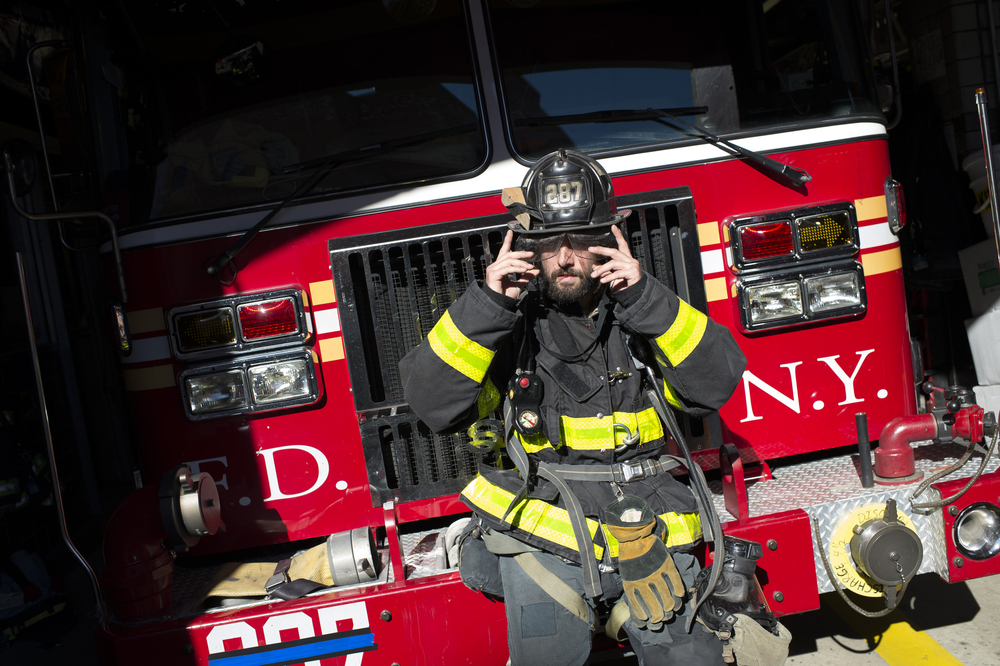Extrathoracic Disease More Prevalent in WTC Firefighters with Sarcoidosis Post-9/11, Study Finds
Written by |

A recent observational study showed that extrathoracic disease has a high incidence in World Trade Center firefighters who developed sarcoidosis following the 9/11 attack in the United States.
The study, “Clinical Course of Sarcoidosis in World Trade Center-Exposed Firefighters,” was published in the journal Chest.
Last year, a study revealed that sarcoidosis is more prevalent among firefighters and emergency medical service responders who took part in recovery and rescue efforts following the 9/11 terrorist attacks on the World Trade Center (WTC) in New York.
The incidence of sarcoidosis in WTC-exposed personnel was found to be 25 per 100,000 person-years, much higher than the average annual prevalence among New York City firefighters (12.9 per 100,000) and among the general population of white men in the U.S. (2.5 to 7.6 per 100,000).
Sarcoidosis is a disease of unknown origin characterized by inflammation and formation of clusters of immune cells, or granulomas, which can affect several organs in the body, especially the lungs, skin, and lymph nodes, and particularly chest lymph nodes. Although its origin isn’t clear, researchers believe sarcoidosis is a product of genetic predisposition and exposure to an environmental trigger that leads to an abnormal inflammatory response.
In firefighters who developed post-9/11 sarcoidosis, researchers identified as possible triggers of the disease the particulate matter, fibers, organic pollutants, gases, combustion byproducts, and metal dust released by WTC fires and rubble.
Few studies have followed the clinical course of sarcoidosis. WTC firefighters represent a unique opportunity to follow the clinical development of incident sarcoidosis over a number of years by taking advantage of the extensive clinical records available for these patients over time.
The study enrolled 59 firefighters with post-9/11 sarcoidosis and examined the involvement of each organ at follow-up between late 2015 and early 2016, and at the time of diagnosis (eight years prior, on average). Most participants (76 percent) did not receive treatment.
Intrathoracic disease involvement (within the thorax) detected by CT imaging occurred in 24 patients (45 percent). However, lung function was normal for almost all patients and was not associated with intrathoracic involvement.
Over time, researchers noticed that extrathoracic involvement increased from 10 patients at diagnosis to 23 at follow-up, affecting mostly the joints (15 percent) and cardiac systems (16 percent). Eyes (5 percent) and skin (2 percent) also were affected.
Overall, extrathoracic involvement was found to be more prevalent among WTC-exposed patients than in male patients not exposed to the WTC aftermath. WTC-linked sarcoidosis also was shown to be a multisystem disease, whereas other exposure-related granulomatous diseases, such as chronic beryllium disease and hypersensitivity pneumonitis, are confined to the lungs, researchers said.
Other symptoms were present in patients at follow-up, including chronic rhinosinusitis, small-fiber neuropathy, and minor abnormalities of vitamin D/calcium homeostasis.
The study emphasized that including cardiac magnetic resonance imaging (MRI) in the protocol of cardiac evaluation allowed for previously unrecognized cases of cardiac involvement to be identified. In general, only 2 to 7 percent of sarcoidosis patients are diagnosed with cardiac involvement, whereas in this study, abnormal cardiac recordings were found in 16 percent of the patients.
Researchers believe that diagnosis based on cardiac symptoms or conventional cardiac screenings — such as electrocardiogram, echocardiogram, and 48-hour continuous recordings — is likely underestimating the clinical cases of cardiac involvement in sarcoidosis, which is an important shortcoming as these cases can be fatal if left undiagnosed.
“Our results … support the need for advanced cardiac screening in asymptomatic patients with strenuous, stressful, public safety occupations, given the potential fatality of a missed diagnosis,” the researchers wrote. “Given the limited number of longitudinal studies of sarcoidosis, we hope these findings will help guide the management of all patients with sarcoidosis, including those with WTC exposure.”





